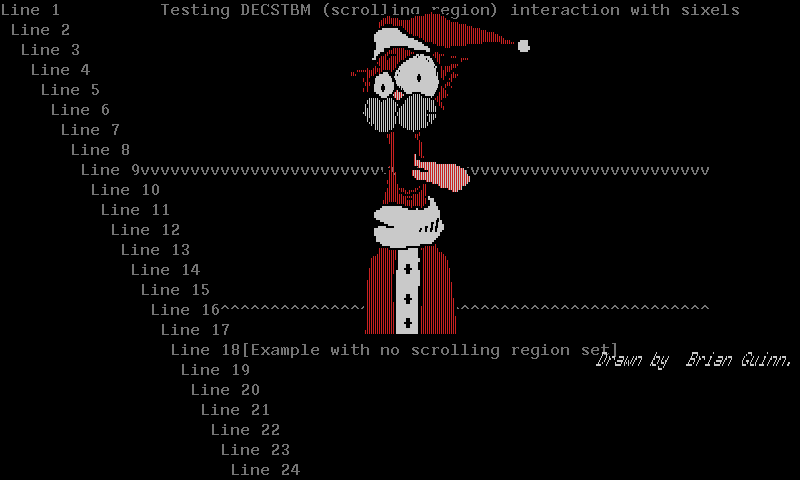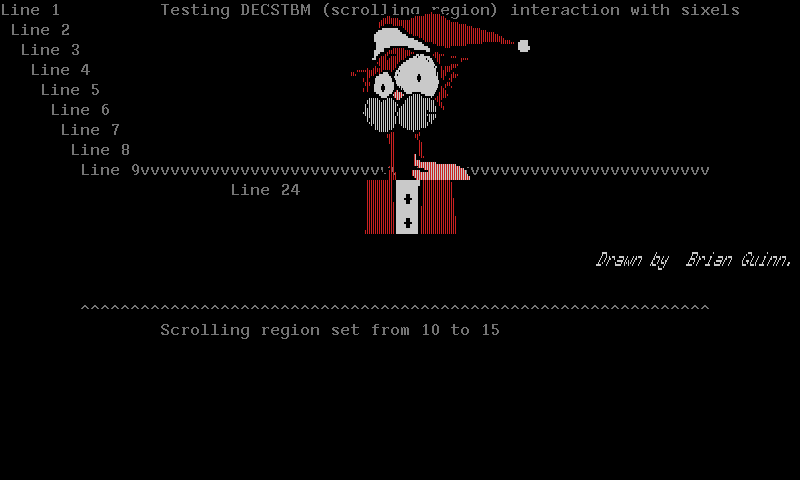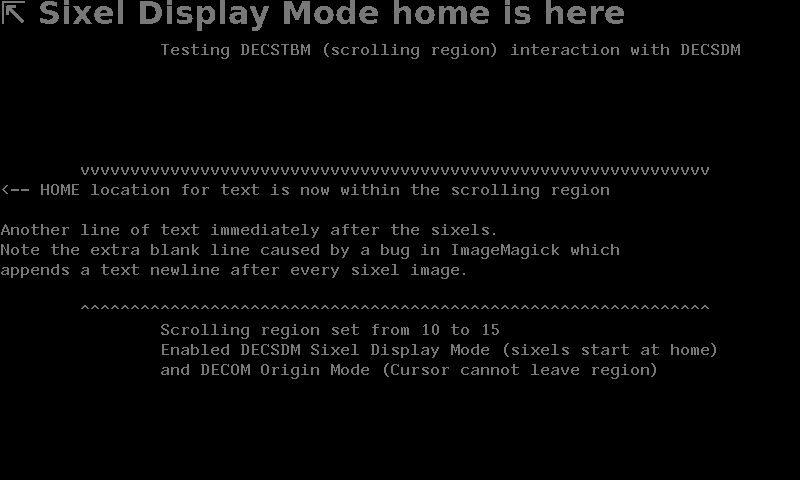Scroll margins definitely do have an effect - there 's a margin clipping test case here: https://github.com/hackerb9/vt340test/blob/main/j4james/margin_clipping.sh And you can see the results here: https://github.com/hackerb9/vt340test/blob/main/j4james/margin_clipping.png
This only tests top/bottom margins, because that's all that is supported on the VT340, but I'd expect left/right to work the same way (except for scrolling).
I haven't tested anything related to DECOM or DECAWM, because I can't actually think of any difference they would make to sixel output (other than their effect on the text cursor position, which ultimately determines the sixel starting position). What exactly did you have in mind?




Sorry, if you already stated it elsewhere and I overlooked it - I wonder how a VT340 deals with scroll margins in SIXEL phase.
My idea so far - imho the 300+ line only supported top/bottom restrictions and left/right was a 400+ thing (plz correct me, if thats already wrong).
Now regarding SIXELs - do scroll margins affect SIXEL printing by any means? Does DECOM change here anything? Has DECAWM any influence on SIXEL printing width?
My current expectations from applying basic text mechanics are (given SIXEL scrolling is set):
Following your findings in other threads and what you wrote so far about SIXEL mechanics my assumption above is certainly wrong. From your writings I would conclude, that SIXELs are not scroll border aware at all, due their more or less direct screen buffer printing skipping most text buffer indirections.
Could you shed light on that mystery on my end? Ofc if needed, I can create a few test cases.